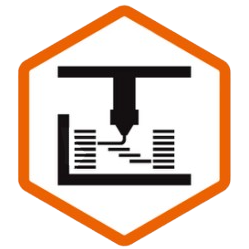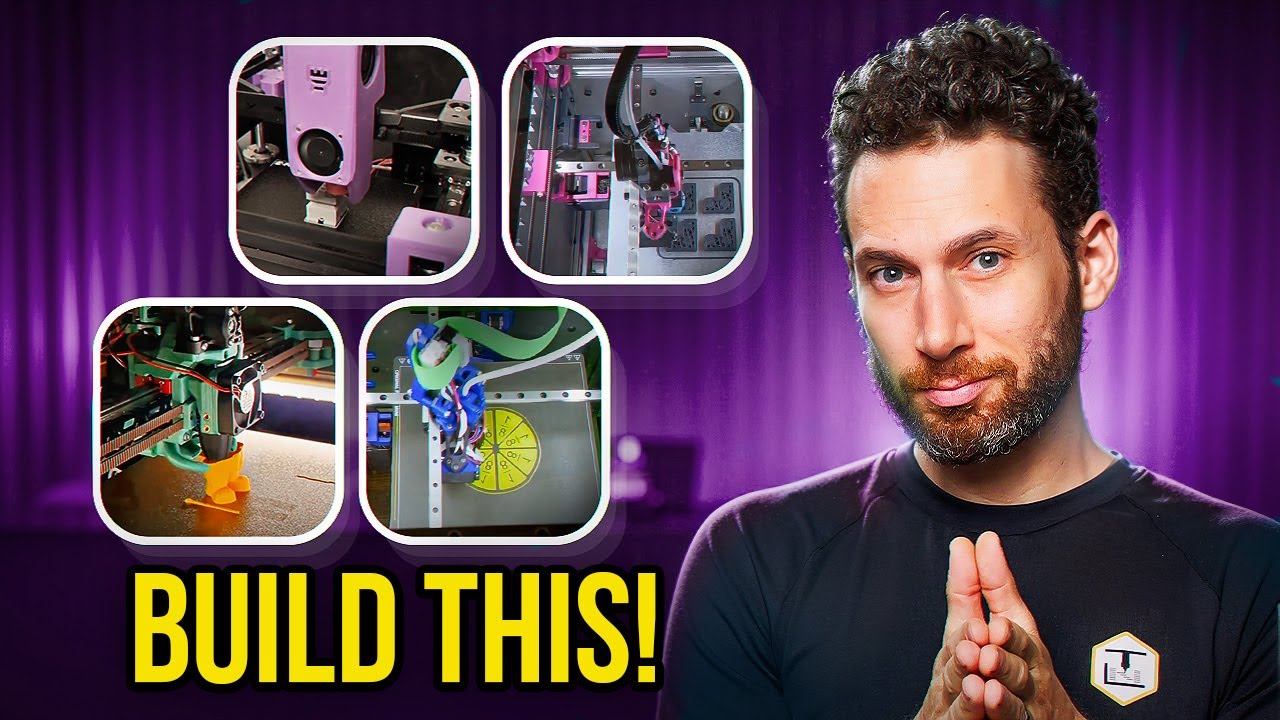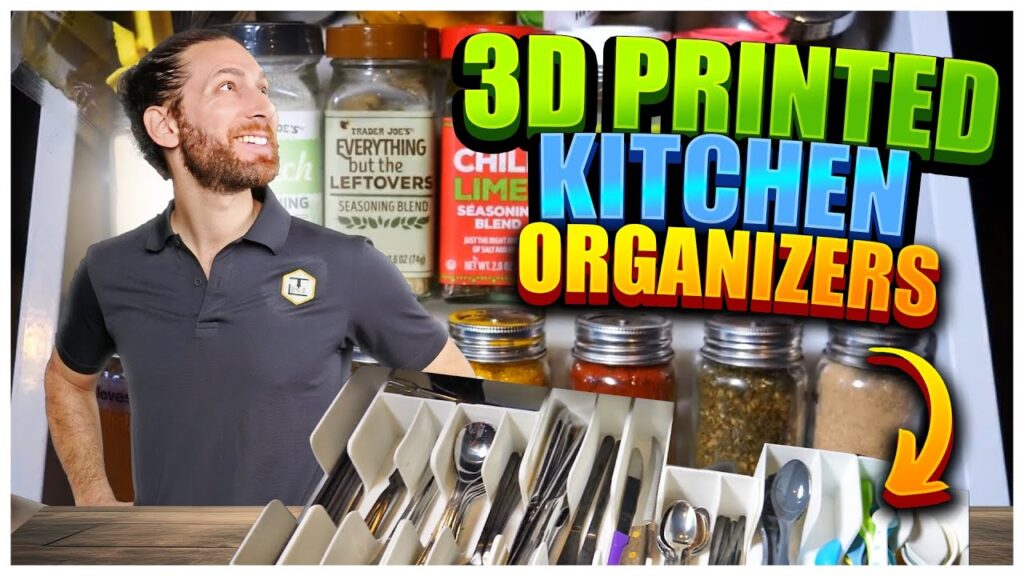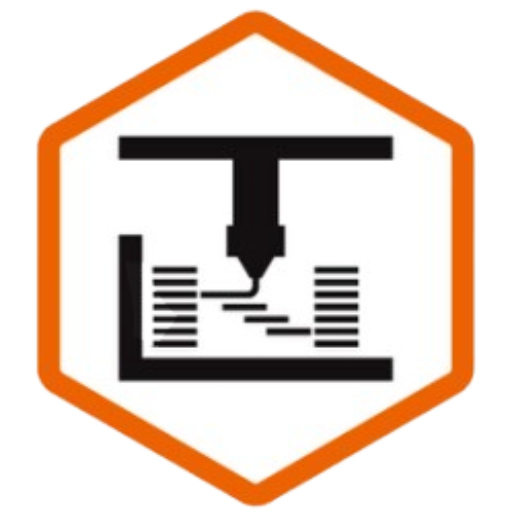Probably the coolest thing about the 3D printing community is the spirit of innovation through collaboration.
Every week, it seems like someone is publishing an impressive new project to push the limits of consumer 3D printing. All over the world, talented designers and engineers are sharing their hard work, most of it free, for others to use and enjoy.
This year, I’ve been on a mission to find and highlight these gifted makers and their inspiring projects – and I just love that EVERY time I share one, you guys come back in the comments with 10 NEW projects like it for me to check out.
That’s why, for the last few weeks, I’ve been SCOURING Github, forums, subreddits, and discord groups, in search of the most exciting, under-loved, open-source projects. And then, I narrowed down the list from hundreds, to only the 50 or so most promising ones that YOU should know about. But the list was SO long, that I ended up posting a poll on our community page, and you guys told me to break it into 3 or 4 videos.
So in this first part of the series, we’re going to be looking at Open Source printers, but in the coming months, we’ll also be looking at open source toolhead designs, multimaterial units, and much, much more.
Let’s get after it!
Background
Just before we dive in, a few pieces of housekeeping.
I’d like to remind you that the folks who create and maintain these projects do it for free and for fun, but that doesn’t mean that you shouldn’t help support them if you derive value from their work.
I did a whole video about this, going into detail about how so many of these designers DREAM of doing this full time, if only they could afford so.
But for those of you who haven’t seen it, I’ll just say that if you DO plan to build any of these projects, it is customary to support the creator with a small donation or by joining their Patreon.
My List of Epic Open Source 3D Printers
Alright, are you ready? Here we go, with the most unique and exciting open source 3D printers:
LH stinger by LemurHaze
It seems like these days, all anyone wants to talk about is CoreXY machines, but if you’re still nostalgic for that classic ‘bedslinger’ design – and maybe want to prove to your friends that even a bedslinger can print quickly, then you might want to check this one out.
To quote their Github, The LH Stinger is “A no-compromise cartesian 3D Printer designed for speed and precision, created as a long-lasting platform for those who like to push quality or speed to the extreme.”
Look, I could sit here and read you a list of features, components, or design choices, but I think in this case, seeing is believing:
Yeah. This thing moves. Currently kits are available from Fabreeko or from FYSETC directly, and will set you back about $700 to $770.
Positron by KRALIN & LDO Motors
While we’re talking about unique formats, let’s mention the Positron: a fully-foldable, portable, and functional 3D printer that fits inside a filament box.
Despite it’s funky form factor, this machine prints up to 180x180x165, and due to it’s low center of gravity, even keeps up with the speeds of most modern printers.
I actually wrote a full article about the LDO Positron, which you can check out here.
Kits are available from major LDO resellers like 3DJake, MatterHackers, and more, and will run you $675 without printed parts.
Lemontron
If that sounds a bit rich for your blood, you’ll probably want to check out the Lemontron, a mostly 3D printable derivative of the Positron.
It features significant upgrades like an internal power supply and bowden tube and a bed leveling sensor – and costs only $413 to build.
Fortunately, the creator of the Lemontron has his own YouTube channel, so it’s easy to learn more should you want to.
Duender by Sergey Irbis
Over the last decade, Creality has probably sold a few MILLION Ender 3’s, and I think it’s safe to say that most of them are either collecting dust or already in landfills. But no more!
The Duender project by friend and fellow content creator Sergey Irbis allows you to take TWO Ender 3’s and convert them into a CoreXY machine with better performance. It leverages predominantly 3D printed parts, and is well documented by Sergey.
For more information, check out his channel or the printables page for the Duender.
Ender 3 NG by RH3D
OK, that’s pretty cool, but how many people have TWO old Ender 3’s sitting around? Well in that case, meet the Ender 3 NG by RH3D.
This project gives your lonely, neglected Ender 3 a serious glow-up — converting it into a sleek, modern CoreXY machine using mostly printed parts and a couple of frame mods. NG stands for “Next Generation,” and honestly, it lives up to the name. You get linear rails, a top-mounted gantry, proper cooling, and support for toolheads like the Stealthburner or Galileo 2.
It’s the perfect blend of budget-friendly and performance-focused — and since it uses the bones of your existing Ender 3, it saves you cash while teaching you a ton in the process.
No kits are available yet, so you’ll need to self-source the printed parts, rails, and upgrades. Assuming you already have the Ender 3, you can expect the total cost to be around $200–300 depending on your choices.
The 100 by MSzturc
What’s that? You like 3D printed 3D printers? But you wanna go fast? Like, REALLY fast?
Then let me introduce you to The 100.
Don’t let all the plastic fool you, this machine is designed to push the limits of DIY FDM 3D printing. 400mm/s print speeds, 43 cubic mm per second flow, and a staggering 100,000 mm/s/s accelerations… hence the name.
If you want to go that fast, it’ll cost you about $350 to self-source and build.
VzBot by Vez3D
What’s that? Seriously? You still want to go FASTER? OK, but, uh… you might need to anchor the printer to your wall.
Meet the VzBot, the brainchild of mad scientist Vez3D or Simon Vezina. The VZBot bills itself as A “High speed, moderately sized 3D-printer, based on the TronXY XS5(A) CoreXY frame, but can be easily adapted for other 2020 aluminium extrusion frames..” But that doesn’t really do it the project justice.
I would say that the VZBot project, today, is known for their insane, CNC aluminum parts, ultra high performance hot-ends and extruders, all-wheel-drive functionality, and blistering speeds. Have a look at this.
What’s more, The VZBot has a thriving community of people around it, with passionate members all over the world. In many ways, I think of it as a more extreme, more niche Voron.
Sound like something you want to sink your teeth into? It won’t come easy. You’ll mostly be self-sourcing parts from a handful of different suppliers, and it will likely set you back $1,000 to $1,500 or more.
Micron by Printers for Ants
Understandably, these types of monsters aren’t for everyone, so let’s take a look at a few different printers by the Printers for Ants project, starting with the Micron.
The Micron is a pint-sized powerhouse — a Voron V2.4 shrunk down to a build volume of just 120 to 180 millimeters, depending on your build. But don’t let the size fool you. It’s a full-featured CoreXY with linear rails, QGL, TAP support, and a slick CANbus setup if you want it.
And because it’s so small, it’s also insanely rigid, meaning it can move fast without sacrificing quality. Great for those who want the Voron experience in a compact form, or for stacking a whole farm on a shelf.
Full kits are available from Funssor, Formbot, and Fabreeko, and start at $549.
Salad Fork by Printers for Ants
If you like the idea of the Micron, but not the flying gantry, then the Salad Fork is for you. Instead of being based on the Voron 2.4, it’s based on a Voron Trident, which means the bed moves on Z while the gantry handles X and Y — making it a little easier to build and less complicated.
It keeps the same compact form factor and many of the same features as the Micron, including linear rails, CoreXY motion, and support for modern toolheads and CANbus setups. But because the gantry stays fixed in Z, it’s a bit more beginner-friendly when it comes to tuning and maintenance.
The Salad Fork is especially popular among folks who want something small, fast, and rigid — but don’t want to deal with the complexity of a fully flying gantry system.
Just like the Micron, there don’t seem to be a lot of official kits – I only found one website Iv’e never heard of, but you can self-source easily using a Trident BOM and some extra STLs from the GitHub, and folks like KB-3D offer a lot of specialized parts, too.
Expect to spend around $600 to $900 depending on how fancy you get.
The Double Dragon by Printers for Ants
If the Micron and Salad Fork are about going small, the Double Dragon is about going twice as hard.
This beast crams not one, but two full CoreXY toolheads onto a single gantry, each with its own hotend, stepper, and extruder. It’s a true independent dual extrusion (IDEX) setup — built with the rigidity and speed you’d expect from the Printers for Ants crew.
Whether you’re printing dissolvable supports, multicolor parts, or just running two jobs at once, the Double Dragon is an absolute flex of engineering. Fair warning though — wiring, tuning, and managing tool offsets gets a lot more complex, so it’s definitely not a beginner build.
Currently, there are no kits available, so you’ll need to self-source everything, from the frame to the electronics to the toolheads. Total cost depends on how fancy you get with components, but expect to spend $900 to $1,300 for a complete build.
Dueling Zero by Printers for Ants
Here, once again, if that sounds too rich for your blood, fear not. You can build the Dueling Zero; the smaller, more manageable sibling of the Double Dragon.
Instead of two big toolheads on one gantry, this project features two completely independent Voron V0-style printers sharing a single frame. Each side has its own motion system, its own electronics, and its own print area — which means you can run two completely different prints at once, totally isolated from each other. It’s like having a tiny print farm in a single box.
This one’s a great choice if you love the idea of redundancy, batch printing, or just maximizing output from a small footprint. There are no kits currently, but the BOM and files are available on GitHub, and since it’s based heavily on Voron V0.2 parts, self-sourcing is totally doable, too.
Expect to spend around $500 to $700, depending on your components.
Annex Engineering K3
If you’re into fast, compact, and absolutely over-engineered printers, then you need to check out the K3 by Annex Engineering.
This little beast packs a ton of performance into a 180x180mm build volume, and it’s designed from the ground up for speed, rigidity, and precision. Unlike most of the other printers on this list, the K3 doesn’t use a standard CoreXY motion system — instead, it runs a Crossed Gantry design, which is kinda like CoreXY’s weirder, beefier cousin. It reduces frame twist and racking, especially at higher speeds, which means this thing absolutely rips.
The frame is fully enclosed, linear rails on every axis, 9mm belts, and support for modern toolheads like the Galileo 2 or Stealthburner. Annex also has a super active community and killer documentation, so while this is definitely a more advanced build, you won’t be flying blind.
For this one, full kits ARE available from folks like Fabreeko, and start at $950.
ZeroG Mercury One
So, we talked about using those old Ender 3’s, but what about the Ender 5’s? If you’ve got one of those lying around, the Mercury One is a killer way to give it new life.
It converts the stock frame into a fully linear rail, CoreXY speed machine — complete with 9mm belts, modern toolhead support, and compatibility with mods like TAP, Nevermore, and CANbus.
Actually, my friend and fellow YouTube creator Mandic Really has put out a lot of content around this:
This one is a great middle ground between a full Voron build and a scratch build, especially if you want something fast, rigid, and well-supported. There’s also a Mercury One.1 variant with even more refinements.
And it’s affordable, too. As long as you have the base printer, you’re looking at just $240 to convert it, using the kit from Fabreeko.
Viking3D Valkyrie by Roy Bensten
For those aiming to tackle high-temperature materials like PEEK or ULTEM, the Viking3D Valkyrie is a formidable DIY option.
This printer boasts a 310x310x300 mm build volume within a fully enclosed, heated chamber capable of reaching up to 80°C. Its inverted CoreXY kinematics and independent triple Z-axis ensure precise and automated bed leveling, while the inclusion of an integrated heated dry-box keeps your filament in optimal condition.
Frame kits are available from suppliers like Maker Supplies, with prices starting around $800 USD. Additional components will need to be sourced separately, and the total build cost will vary based on your choice of parts and materials.
The Rook by Rolohaun Design
On the other hand, if you’re looking to build a 3D printer that’s both affordable and educational, The Rook by Rolohaun Design is a project worth considering.
This mostly 3D-printed CoreXY printer is designed with simplicity and cost-effectiveness in mind, making it an excellent choice for beginners.
With a compact build area of 120 x 120 mm, it offers a practical platform for learning the intricacies of 3D printer construction and operation.
The project emphasizes accessibility, with an estimated build cost of around $260 USD. CNC machined parts are available from Funssor.
The Rook 2020 MK2 by Rolohaun Design & Kanrog
For those who prefer a more robust frame, there’s the Rook 2020 MK2, which incorporates a 2020 T-slot extrusion frame while maintaining the core design principles of the original.
Frame kits for the Rook MK2 are available from suppliers like Funssor, but you’re on your own for sourcing the electronics, hardware, and printed parts. Expect to spend $300-350.
Fenrir CoreXY by MakerViking
If mostly 3D printed 3D printers are something you’re into, check out the Fenrir, a compact, fully 3D-printed CoreXY printer with integrated walls, giving it a super clean, rigid structure without using aluminum extrusions.
It runs on LDO linear rails, uses an Orbiter 2.0 extruder with auto-load, and supports hotends like the Revo Micro and Mosquito. With a 120x120x120mm build volume, it’s built for speed and reliability in a tiny footprint.
Actually, I interviewed MakerViking on the Infill Podcast, so here’s link to that episode if you want to check it out.
Infini-Z
Ok, so we covered 3D printed 3D printers, but what about 3D printers that literally 3D print themselves? The Infini-Z by SunShine features an infinite Z-axis, allowing it to extend its own frame upward as it prints. Isn’t that weird?
Currently, the Infini-Z is in the conceptual and developmental stages, with no kits available. Builders interested in this ambitious project will need to follow SunShine’s updates… and be prepared for a highly experimental build.
Babybelt Pro by Printcepts
Up next, another type of “infinite Z” printer, the Babybelt Pro.
Designed with affordability and simplicity in mind, it features a mostly 3D-printed frame, utilizing common and cost-effective components.
This is a great way to get into belt printing without breaking the bank, and it should cost you less than $200 to build.
Milo CNC by Millenium Machines.
OK, one last machine, though admittedly this one isn’t a 3D printer.
It’s the Milo CNC, and I just have to include it because it’s kind of like, the Voron of CNC Machines.
Also, I had their founder, Jake England, on the podcast, and he’s a great guy.
The Milo is a fully open-source, desktop-sized CNC mill designed for serious metalwork — think aluminum, brass, even light steel, all from your garage. It’s built like an absolute tank, with precision linear rails, ballscrews, and a stiff, all-metal frame.
Unlike many desktop CNC’s, it offers a pretty large working area of 340×160×120mm. And unlike most CNC kits that feel like a science fair project, the Milo is clean, compact, and feels like a product.
High quality LDO Motors kits are available from West3D and Matterhackers, and will set you back $1,299.







